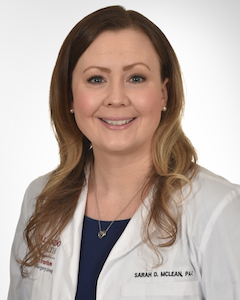Your skin is the largest organ of your body. With all that surface space, it’s not unusual to get an occasional scrape or cut. While many wounds can be treated at home — or your doctor’s office — some require the care of a specialist.
Wounds: The Basics
All it takes is a simple scrape or crack of the skin to leave underlying tissues exposed to the outside world. A wound is an injury to living tissue, typically where the skin is cut or broken. Wounds can be the result of trauma, surgery, burns or infection.
Minor wounds heal easily, but still require care to avoid infection. Larger or deeper wounds require more healing time and may involve damage to tendons, muscles, nerves, blood vessels and bones.
Wounds that come from cuts, scrapes and some punctures will bleed, but some puncture wounds, as well as burns and pressure wounds, may not. Wounds heal as the body’s immune system begins the repair process. As new skin forms over the injury, the edges pull in and the wound gets smaller.
Because of the danger that can come from not properly treating a wound, it is essential to know which types of injuries can be handled at home and which ones require professional medical attention.
When to Treat a Wound at Home
Minor cuts, scrapes and punctures not more than a quarter-inch deep may need only basic wound care treatment at home.
This involves:
-
The initial clean. Immediately after the injury, wash thoroughly with clean water and mild soap. Remove any visible debris. Apply gentle pressure to stop bleeding.
-
Bandage. Apply a thin layer of antibiotic ointment. Cover with a bandage.
-
Continued care. Clean the area twice daily with soap and water, and apply a new bandage and ointment after cleaning. Continue this until the wound is fully healed.
The Exceptions
Other types of wounds can require a different approach.
-
Minor burn wounds: Run cool water over the area or apply a cool, wet cloth. If blisters form, do not pop or drain.
-
Wounds on the face or reaching bone (even if only a quarter-inch deep): See a medical professional.
-
Deep or gaping wounds that need stitches: See a medical professional.
-
Animal or human bite: See a medical professional.
-
An injury caused by a rusty object: See a medical professional.
-
If bleeding cannot be stopped after 10 minutes of pressure: Call 911.
-
If you cannot feel or move the injured area: Call 911.
Fighting Infection
Sometimes a wound that seemed minor at first can later develop an infection and need additional treatment.
Contact a doctor if you have any of the following:
-
Redness spreading out from the wound
-
Increased pain or swelling
-
Difficulty moving the affected area
-
Pus or odorous drainage
-
Warmth around the wound
-
Fever higher than 100.4 degrees
-
Poor healing
Chronic Wounds
Unfortunately, some wounds don’t heal as they should. If normal healing doesn’t occur despite standard wound care, your wound is considered non-healing or chronic. You may have a chronic wound if it:
-
Has not started to heal in two weeks
-
Has not completely healed in six weeks
Chronic wounds remain in the inflammatory stage, which means the injury continues to have swelling, redness and pain. These non-healing wounds can become infected and lead to infection in the bone or bloodstream, which then can lead to the loss of a limb.
People who develop chronic wounds often have an underlying condition such as diabetes, poor circulation, vascular diseases, weakened immune system or pressure ulcers. In addition to good wound care, it's important to treat the underlying condition that contributed to the development of the wound.
Diagnosis and Treatment by a Specialist
When wounds don’t heal or are still painful despite treatment, it’s time to see a specialist. A qualified provider who deals with non-healing wounds is your best resource for questions about potential infection from a wound that isn’t healing properly.
At a wound care center, the wound will be measured and examined, and blood flow to the wound will be checked to determine why the wound is not healing. The wound will be cleaned and any dead skin and tissue will be removed to promote healing. Then the wound will be dressed to prevent infection and a treatment plan will be established.
Depending on why the wound has become chronic, a variety of treatments are available to help. In addition to regularly changing the wound dressing, care options may include: infection treatment, treating underlying conditions that may prevent healing, hyperbaric oxygen therapy, negative pressure therapy, growth factor therapy and skin grafts.
Ideally, your wound care team should work closely with other providers to address your specific risk factors and barriers to wound healing.
Choose to Stay in Touch
Sign up to receive the latest health news and trends, wellness & prevention tips, and much more from Orlando Health.
Sign Up










